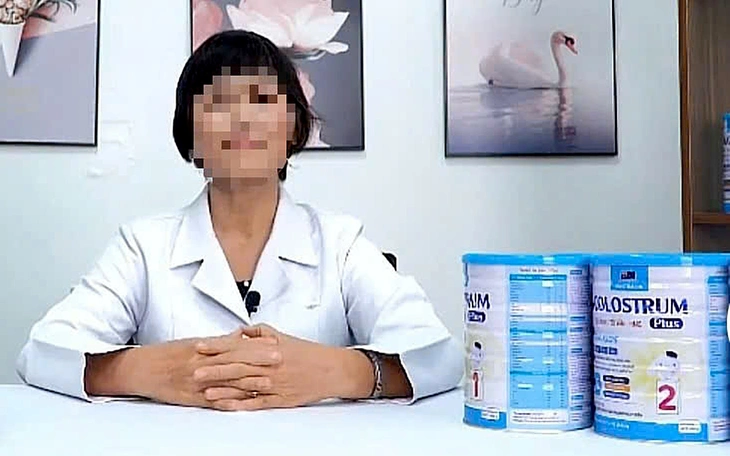For milk products, counterfeit goods mainly come in two forms: the producers fake the packaging, the milk inside is of unknown origin and quality, or they use the packaging of famous brands, but swap the inside for poor quality milk.
In the case that was just discovered, the subjects established a company to produce many types of milk with different brands, with a massive advertising strategy to launch large quantities on the market. However, the ingredients declared on the company's milk products such as bird's nest extract, cordyceps, macca powder, walnut powder... are not available but are replaced by some input materials and some other additives are added.
This incident once again reminds consumers not to overuse and consider milk as a panacea. Previously, in Dong Ha City, everywhere you go, you hear advertisements about a type of colostrum that can cure all diseases (stomach, colon, thin people will gain weight and vice versa)... Many people spend a lot of money to buy it for themselves or for their relatives. Understanding the psychology of customers, the distribution company launched many preferential policies such as the more you buy, the lower the price or accumulate points to exchange for gifts, which further stimulates buyers. There is no basis to confirm whether it is genuine or fake, but the way to advertise milk with many uses like that is not okay.
Milk is an easy-to-consume product because everyone needs it, from children to the elderly. As life improves, this need also increases. In addition, through multi-level marketing channels and a massive communication strategy on social networks, this product is getting closer to consumers. To gain customers' trust, most brands use images of doctors, nutritionists, famous artists... to advertise. Many customers reflect that they seek out this product first and foremost because they trust the brand's representative.
Take the example of Hiup milk, a milk product advertised to help children grow taller. This milk is of interest to many people with children aged 3-15, but to attract that attention, it is thanks to the famous MC chosen by the brand as its representative. However, when visiting Facebook pages advertising this product to find and buy the product, customers feel like they are lost in a "ghost maze".
Online businesses create multiple Facebook accounts and run ads with similar images and content. Product photos are relatively professional and do not have addresses, phone numbers or general addresses. When customers ask, they only receive inbox (private messages).
This makes customers not know which page is genuine, while the product is not sold directly in the area. Not to mention, each page reports different prices and different preferential policies. Many people only discovered this abnormality after purchasing the product and promptly stopped.
It is undeniable that image promotion technology and market access skills help counterfeit products go further. For example, with Rance Pharma International Pharmaceutical Joint Stock Company, a member of the International Pharmaceutical Group (the unit that counterfeited nearly 600 types of milk mentioned above), an advertising video said that this unit has been operating for more than 15 years in the field of pharmaceuticals, health protection foods and products for mothers, babies and families...
According to the advertisement, the products of these companies meet US FDA standards; they are widely available in many localities nationwide. Many other brands also have the same approach to customers, so it is not surprising that many people are influenced by the advertisement first and then buy the products later. After this incident, many people must have changed their perspective. Milk is good for health, that is obvious. But it is only good when you buy the right product, at the right point of sale.
Counterfeit and poor quality products have disrupted the powdered milk market. Meanwhile, if these products are not guaranteed, they will cause many health consequences, especially for children - vulnerable groups due to their weak immune and digestive systems.
Many parents still have the habit of listening to advertisements when buying milk instead of carefully checking the label and origin. This creates loopholes for fake milk powder to infiltrate the market and reach consumers.
In recent years, on e-commerce platforms and social networking sites, many milk products for children, adults, and even pregnant women have appeared, but the origin and quality of the products are almost uncontrolled.
This situation makes it difficult for authorities to inspect and monitor. It is not easy to distinguish between real and fake milk with the naked eye, especially with sophisticated counterfeit products. Therefore, market management agencies need to open a space to display genuine and fake products for this product so that people can easily access and be guided with the necessary information to distinguish.
Some branded milk products with high consumption are often counterfeited such as Glucerna, Abbott Grow, PediaSure, Ensure Gold... so customers need to be carefully instructed to identify genuine products. Consumers also need to be equipped with the necessary skills to identify products through barcodes, expiry dates, packaging, and the color and taste of milk.
It is important to choose milk according to the age, health status and nutritional needs of the user, not to buy because of advertising.
For those with young children, raising awareness, practicing the habit of going to nutrition counseling, reading labels, and checking product information carefully are practical ways to protect children from unnecessary risks.
Anh Thu
Source: https://baoquangtri.vn/sua-gia-va-nhung-moi-nguy-hai-that-193043.htm







![[Photo] General Secretary concludes visit to Azerbaijan, departs for visit to Russian Federation](https://vphoto.vietnam.vn/thumb/1200x675/vietnam/resource/IMAGE/2025/5/8/7a135ad280314b66917ad278ce0e26fa)
![[Photo] General Secretary To Lam receives leaders of typical Azerbaijani businesses](https://vphoto.vietnam.vn/thumb/1200x675/vietnam/resource/IMAGE/2025/5/8/998af6f177a044b4be0bfbc4858c7fd9)


















































![[Photo] Prime Minister Pham Minh Chinh talks on the phone with Singaporean Prime Minister Lawrence Wong](https://vphoto.vietnam.vn/thumb/402x226/vietnam/resource/IMAGE/2025/5/8/e2eab082d9bc4fc4a360b28fa0ab94de)


































Comment (0)